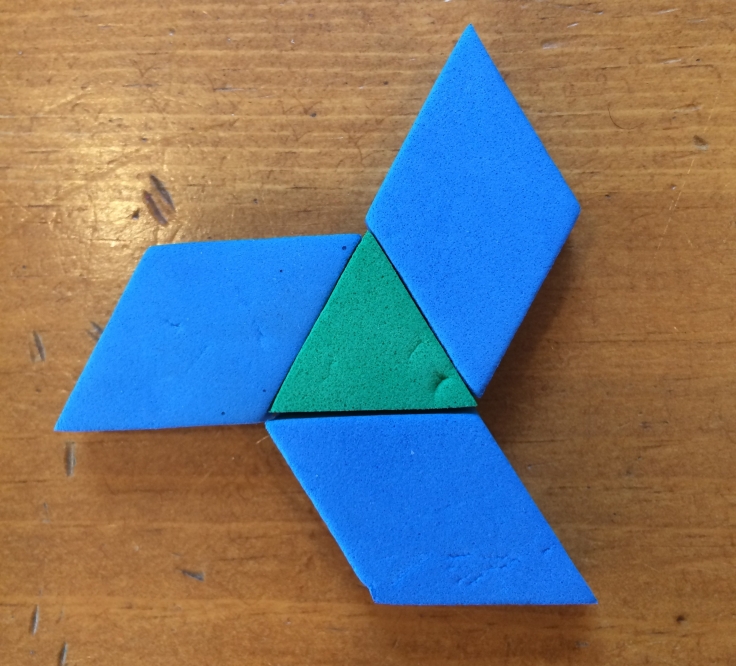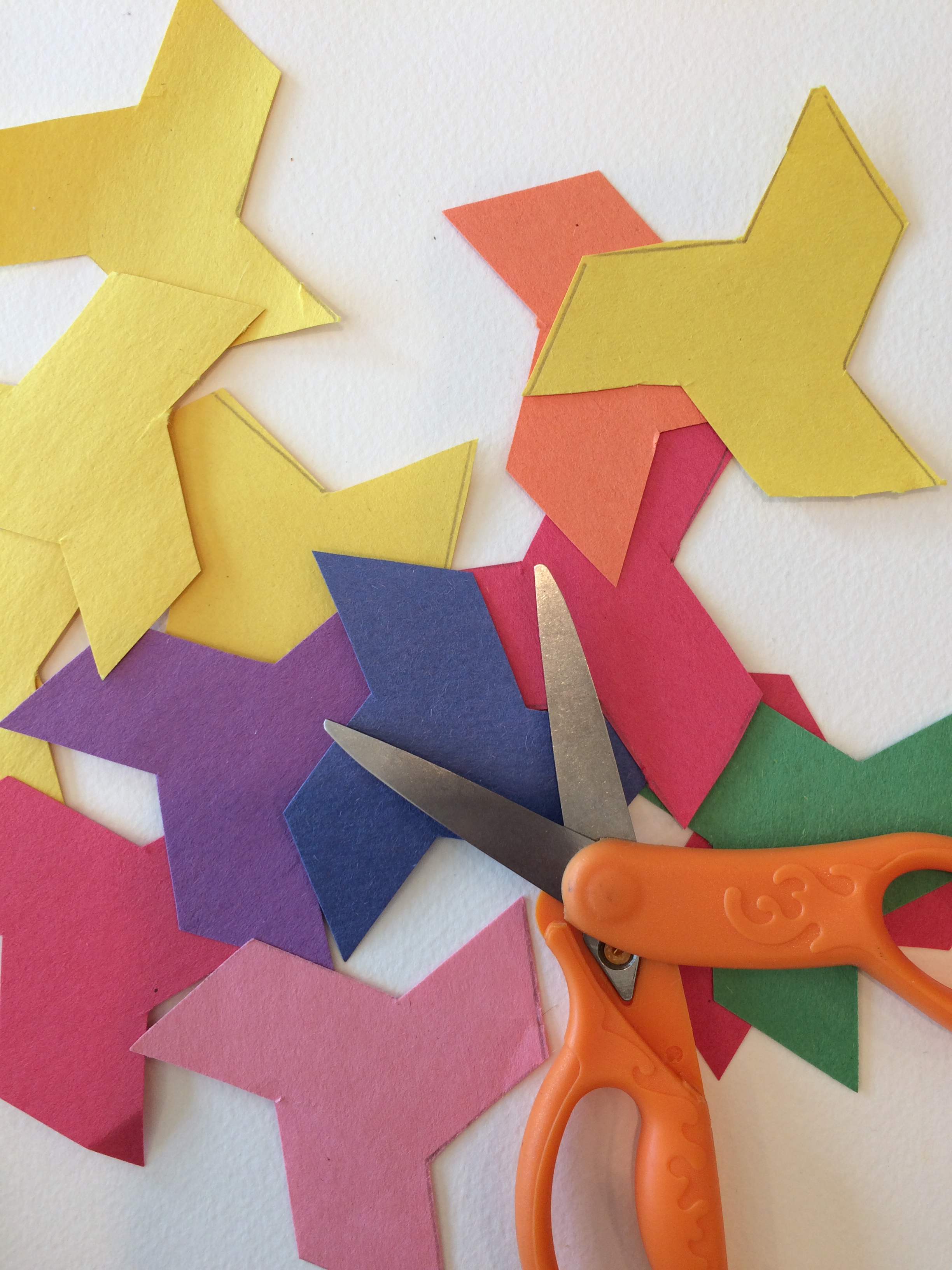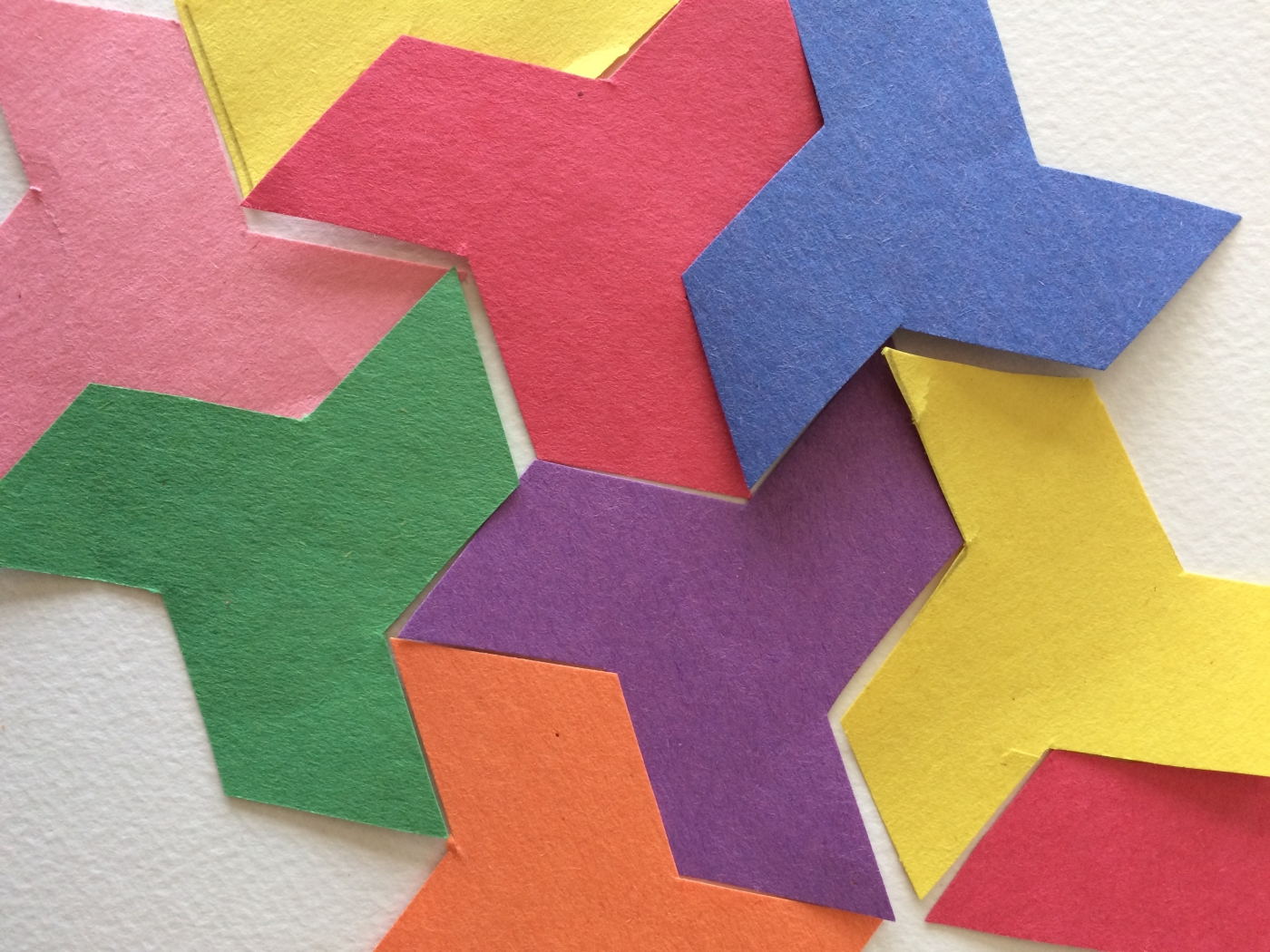I can’t say that I’ve ever been very intrigued by tessellations. I needed a good activity to do with pre-school-aged children, though, and tessellations combine patterns and crafts…always a winner with the three to four year old set. As usual, anytime I dismiss something as not-so-interesting, I ultimately discover how mistaken I was. It’s great to tessellate!
A tessellation is a pattern of repeating shapes that fit together without gaps. That’s all. So the tiling pattern on your bathroom floor or wall is a tessellation. The pattern of bricks in a wall is a tessellation. The pattern on a classic soccer ball is a tessellation of hexagons and pentagons (but if you were to lay it out flat on the floor, it would not tessellate because there would be gaps.)
Of course, tessellations can get much more complex…
So how to do tessellations with your kids? Here are some ideas:
- Point them out around your house and around town. You can find tessellations in any kind of tiling pattern. If you don’t have the time or inclination to get crafty with your kids, you can simply point out patterns and introduce the world “tessellation.” I mean, really, isn’t it a cool word? Say it! Sing it! Turn it into slam poetry!
- Tessellate in the tub! This is a great idea because your kid has got to get into the tub at some point, right? Right. Remember those soft pattern blocks that we used in the tub? Use them again to make tiling patterns during tubby time…but this time call them tessellations. (By the way, these soft pattern blocks are an awesome gift to give to kids who aren’t likely to try to eat them.)
- Create your own simple tessellation pictures with your kids. You’ll need some time and patience for this. I created a shape that could tessellate in what I thought would be an interesting way. I used 3 parallelograms and one equilateral triangle to make this:
 I traced it, then I started cutting out a lot of them in many different colors. I felt that I needed to do the cutting so that the shape would be as precise as possible, but the 5-year-old insisted on helping me. Never turn down a 5-year-old who insists on helping. Just make sure your patience levels are high. So I handed him a sheet of traced shapes and a pair of scissors. Well, let me tell you, that kid went to town! He could not get enough of cutting out these shapes. He asked for more. Then more. Then some more. Apparently, cutting out this shape hit the sweet spot of challenge and interest for him. Great. There’s a mathy moment there for sure as he navigates acute and obtuse angles and notes the difficulty or ease of dealing with each.
I traced it, then I started cutting out a lot of them in many different colors. I felt that I needed to do the cutting so that the shape would be as precise as possible, but the 5-year-old insisted on helping me. Never turn down a 5-year-old who insists on helping. Just make sure your patience levels are high. So I handed him a sheet of traced shapes and a pair of scissors. Well, let me tell you, that kid went to town! He could not get enough of cutting out these shapes. He asked for more. Then more. Then some more. Apparently, cutting out this shape hit the sweet spot of challenge and interest for him. Great. There’s a mathy moment there for sure as he navigates acute and obtuse angles and notes the difficulty or ease of dealing with each.  When we had enough shapes cut out, I put a handful in front of him and simply suggested that he try to connect them together like puzzle pieces. I did not give a long exposition on tessellations or show him what I expected him to do. So, this is what he did…
When we had enough shapes cut out, I put a handful in front of him and simply suggested that he try to connect them together like puzzle pieces. I did not give a long exposition on tessellations or show him what I expected him to do. So, this is what he did…
Okay. Creative. That’s fine. Note that on the right side of the first picture there is an example of how I expected my son would “tessellate” the shape that we had cut out. I complimented his landscape and said it was a terrific example of “not-a-tessellation.”
- With the 8-year-old, I did something a little different. Unfortunately, I also did not take pictures of what we did, because I was making an effort to stay focused on him and not pull out my phone to take pictures. Honestly, I don’t even know what ended up happening to his final product, so I can’t take a picture of it! But the project was pretty cool, and ended up making an unexpected shape that could tessellate. Try it here. By the way, the 8-year-old’s project did not come out looking like some amazing piece of colorful artwork. He traced his shape in pencil on white paper a couple times, noted how it all fit together like a puzzle, then curled up and read comics. THIS IS OKAY. Plenty of websites will make the finished project of such a project look like a beautiful piece of artwork. Maybe that will happen. Just as likely that it won’t, though. It does not matter. What matters is those 10-15 minutes my son spent figuring out how to create his shape and trace it. In those minutes, some seeds were planted that may get him thinking and noticing the world a little bit differently…
(Mathematically…tessellations will spark curiosity, creativity, and facility with shapes. There are so many different ways to notice, play with, and create tessellations, so choose what works for you and your kid. Noticing tessellations in your home and around town works your child’s observation and definition skills. Making tiled tessellations in the tub lays the foundation for understanding angles. Creating new shapes to tessellate synthesizes these skills.)
Photo Credits:
Lizards: Kurt Komoda on Visualhunt / CC BY-NC-ND
Mosque tile: seier+seier on Visual hunt /CC BY
Soccer balls: Joe Shlabotnik on Visualhunt / CC BY-NC-SA
Red tile: Photo on VisualHunt.com
Stone tile: Photo on Visual Hunt
Shingles: Photo on VisualHunt.com
Bricks: Photo on VisualHunt.com











I have a game with these patterns which they are supposed to join into a bigger image. It is fun and kids do surprise us with their creativity. I did not know it is called tessellation.
LikeLiked by 1 person
Fun word, isn’t it? There are so many ways to approach this kind of pattern exploration. And what’s great is that means that as a parent or teacher we can find an activity that makes it accessible to any type of learner AND we can do many different activities to give each learner a broad experience.
LikeLike